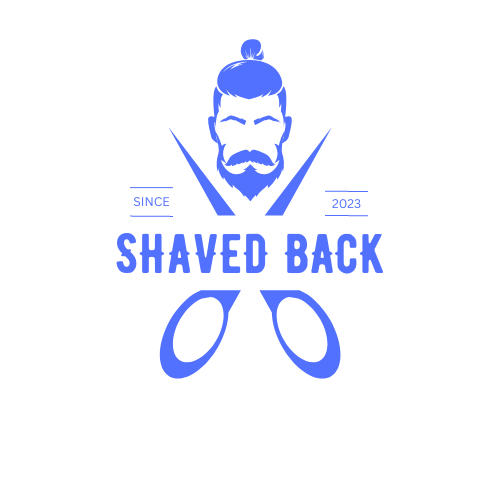Smooth, hair-free skin is a goal for many of us, but the aftermath of shaving and waxing can often be less than desirable. Skin irritation, redness, itching, and razor burn are common issues that can plague us after hair removal. However, fear not! There are several effective strategies and tips you can use to prevent and alleviate these post-shaving and waxing woes. In this comprehensive guide, we'll explore the best ways to keep your skin happy and irritation-free after hair removal.
Table of Contents
- Understanding Skin Irritation
- Preparing for a Smooth Hair Removal Experience
- Shaving Without Irritation
- Waxing Without Irritation
- Post-Removal Skin Care
- Natural Remedies for Skin Irritation
- When to Seek Professional Help
- Conclusion
1. Understanding Skin Irritation
Before diving into prevention methods, it's essential to understand why skin irritation occurs after shaving and waxing. Skin irritation can manifest as redness, itchiness, small bumps, or even ingrown hairs. These issues usually occur due to:
- Friction: The act of shaving or waxing itself creates friction, which can lead to irritation.
- Removing the Skin's Natural Barrier: Both methods can strip away the skin's natural oils and protective barrier.
- Ingrown Hairs: Cutting or ripping hair from the follicle can cause hairs to grow back into the skin.
- Sensitivity: Some individuals have more sensitive skin, making them more prone to irritation.
2. Preparing for a Smooth Hair Removal Experience
Before you even pick up a razor or schedule a waxing appointment, proper preparation is key to minimizing irritation.
- Exfoliate: Gently exfoliate the skin a day or two before hair removal to remove dead skin cells and prevent ingrown hairs.
- Choose the Right Method: Consider which hair removal method is best for you. Waxing typically results in longer-lasting smoothness, while shaving is quicker and less painful.
- Hydrate: Keep your skin well-hydrated by drinking plenty of water and using a moisturizing lotion regularly.
- Trim Long Hair: If your hair is long, trim it before shaving or waxing to reduce pulling and tugging.
3. Shaving Without Irritation
Shaving is a popular and convenient method for hair removal, but it can lead to irritation if not done correctly.
- Use a Sharp Razor: Dull blades can cause more friction and lead to irritation. Replace your razor regularly.
- Shave in the Direction of Hair Growth: This reduces the risk of ingrown hairs and irritation.
- Pre-Shave Oil: Applying a pre-shave oil can create a protective barrier and make the razor glide more smoothly.
- Avoid Pressure: Don't press too hard while shaving; let the razor do the work.
- Cold Water Rinse: Finish with a cold water rinse to close the pores and soothe the skin.
4. Waxing Without Irritation
Waxing is effective at removing hair from the root but can be painful and cause irritation. Here's how to minimize those effects:
- Professional Waxing: Consider going to a professional for your waxing needs to ensure it's done correctly.
- Hair Length: Make sure your hair is the right length for waxing, typically around 1/4 inch.
- Clean Skin: Cleanse your skin before waxing to remove oils and bacteria.
- Follow Aftercare: Pay attention to post-waxing care instructions provided by your esthetician.
- Exfoliate Gently: After a few days, start gentle exfoliation to prevent ingrown hairs.
5. Post-Removal Skin Care
Proper aftercare is crucial for preventing and alleviating skin irritation after shaving and waxing.
- Moisturize: Apply a gentle, fragrance-free moisturizer to keep the skin hydrated.
- Avoid Harsh Products: Skip products containing alcohol or fragrances, as they can irritate freshly shaved or waxed skin.
- Cool Compress: If you experience redness or itching, a cool compress can provide relief.
- Avoid Tight Clothing: Loose-fitting clothing can reduce friction and irritation.
- Sun Protection: Protect your skin from the sun with sunscreen, as freshly exposed skin can be more sensitive.
6. Natural Remedies for Skin Irritation
If you prefer natural remedies, there are several options to soothe irritated skin:
- Aloe Vera: Apply aloe vera gel to calm and hydrate irritated skin.
- Tea Tree Oil: Diluted tea tree oil can help prevent and treat ingrown hairs.
- Oatmeal Bath: An oatmeal bath can relieve itching and redness.
- Witch Hazel: Witch hazel has anti-inflammatory properties and can be used as a gentle toner.
- Coconut Oil: Coconut oil can be applied to moisturize and soothe the skin.
7. When to Seek Professional Help
In some cases, skin irritation after hair removal may persist or become severe. If you experience any of the following, it's advisable to consult a dermatologist or skincare professional:
- Severe redness, swelling, or blistering
- Pus or signs of infection
- Chronic ingrown hairs
- Persistent itching or discomfort
- Changes in skin texture or color
Conclusion
Achieving smooth, hair-free skin after shaving and waxing is a common goal, but it's essential to prioritize skin health in the process. By following the tips and strategies outlined in this guide, you can significantly reduce the risk of skin irritation and enjoy the benefits of hair removal without the discomfort. Remember that everyone's skin is different, so it may take some trial and error to find the methods and products that work best for you. With patience and proper care, you can achieve the silky-smooth skin you desire without the irritation and redness that often accompany hair removal.


